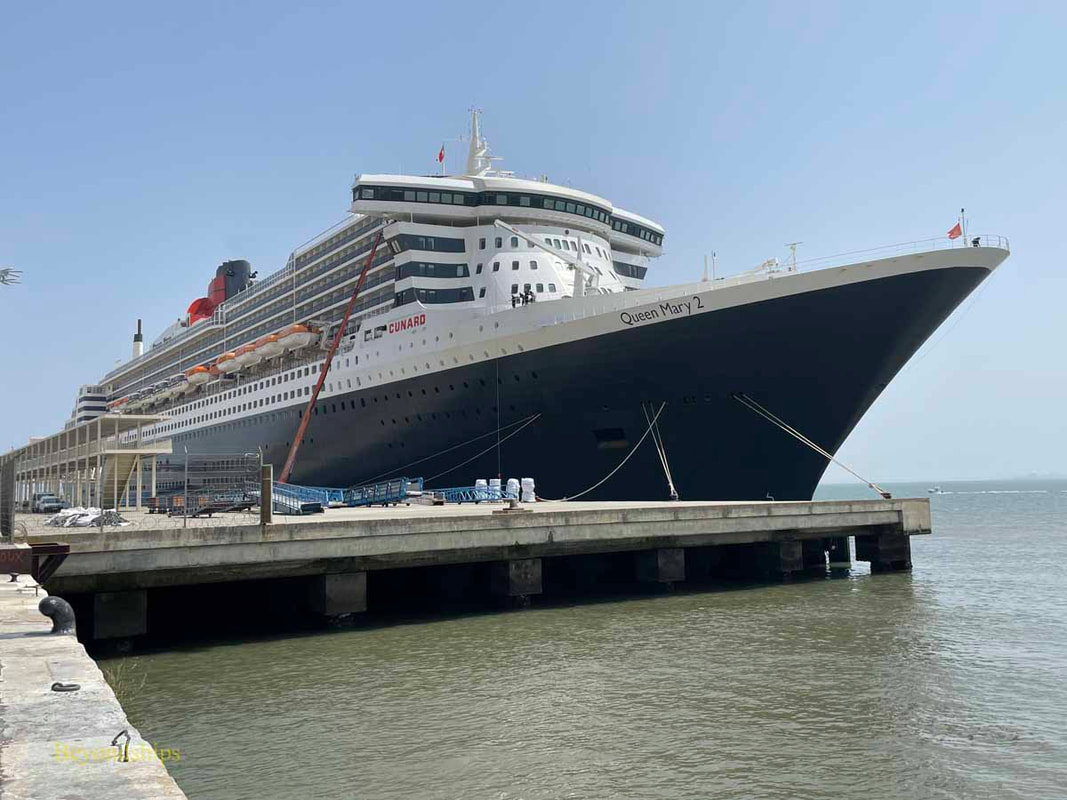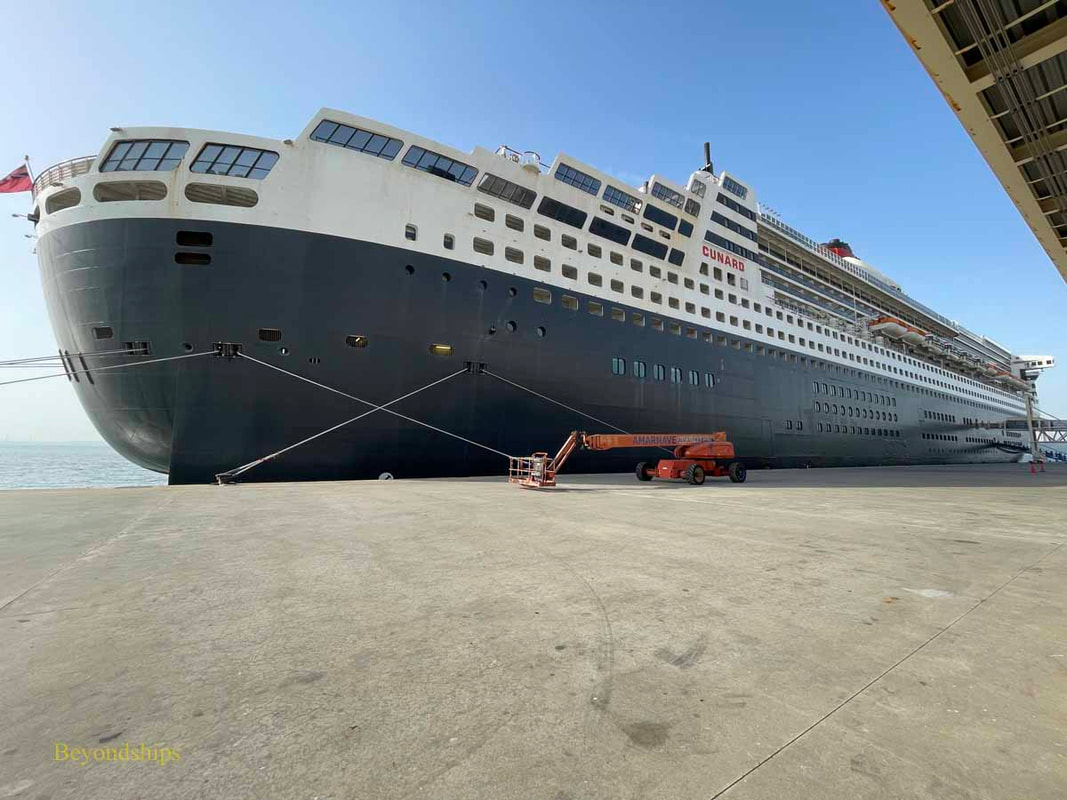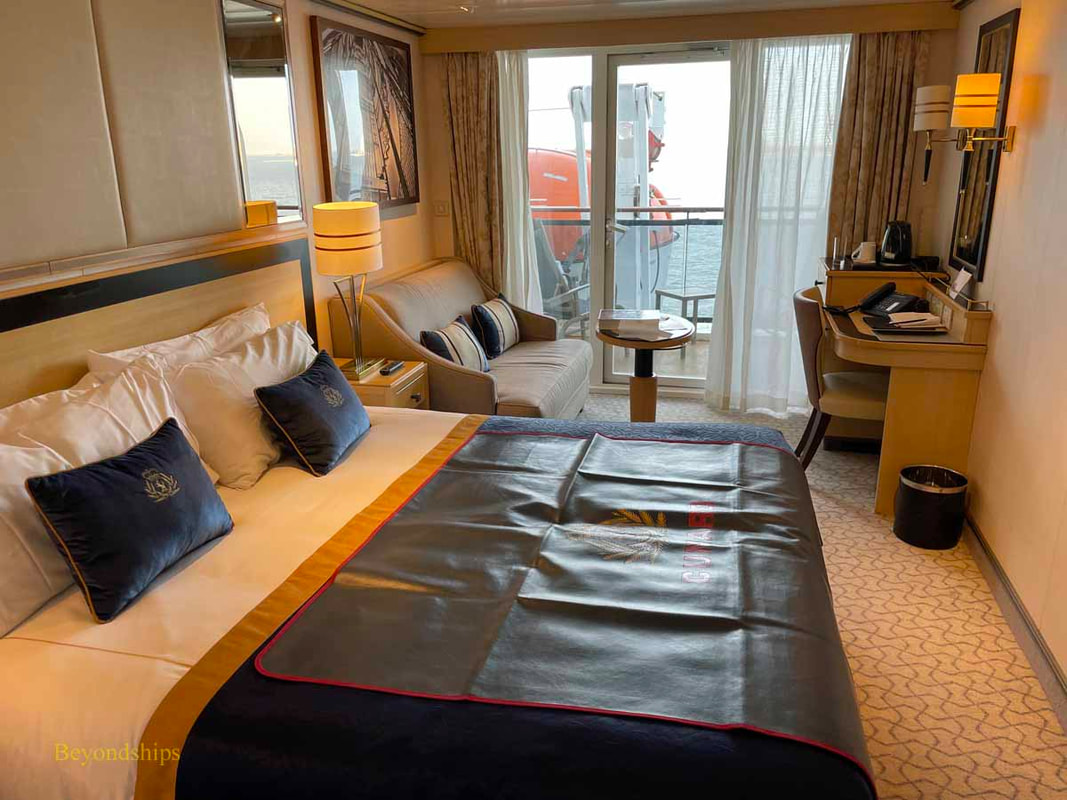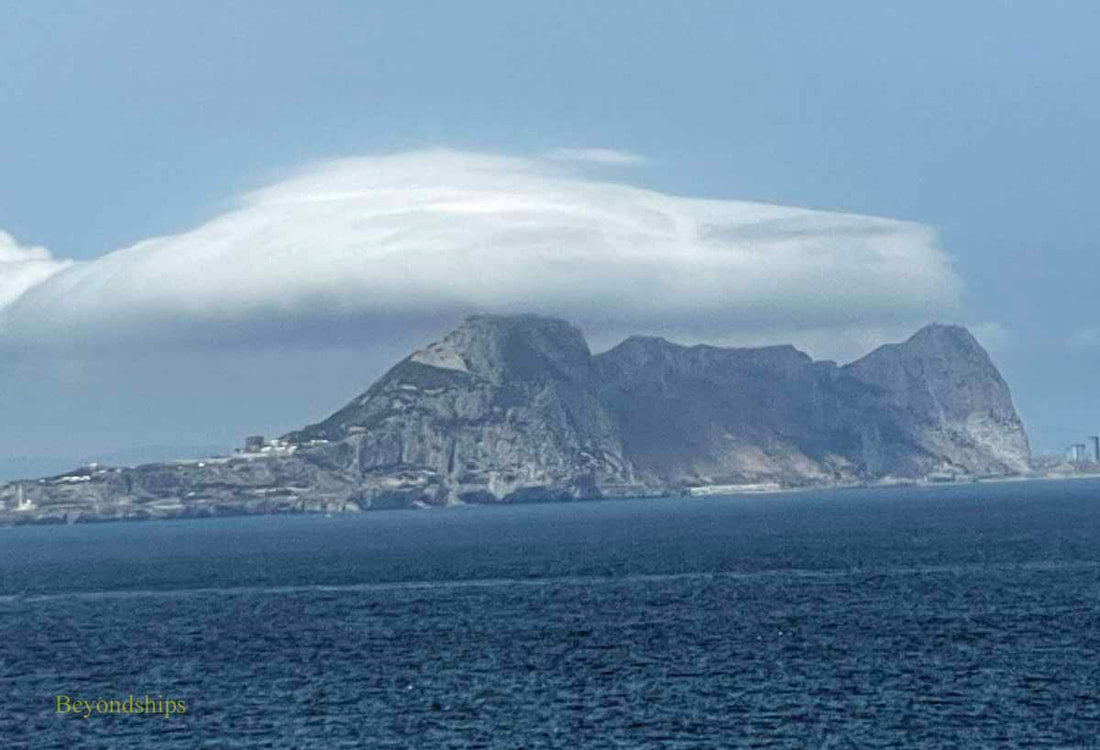|
I was standing on line awaiting to embark when I heard another passenger say: “This is the cruise of a lifetime!” Indeed, one could see her point - - 28 days roundtrip from New York City on the glorious Queen Mary 2 with calls in England, Spain, France and Italy. It could not help but produce a bevy of lasting memories.
This was not a traditional cruise. Traditionally, all of the passengers on a cruise did the same itinerary with everyone getting on and off the ship at the same time in the same place. However, whereas here about 400 of the passengers would do the full round trip, other passengers did various segments of the voyage. Some just did the eastbound crossing to England; some just did the cruise in the Mediterranean; some departed the ship in Civitavecchia, Italy, while others joined in that port; and still others just did the westbound crossing from England to New York. Thus, passengers had a great deal of flexibility in designing their journey. Of course, passengers have long had the ability to create a similar trip by stringing together a number of consecutive cruises back-to-back. However, in this case, the fares for the full 28-day voyage were substantially less than the price of the combined component parts. Also, when one combines cruises back-to-back, there is often repetition in things like the entertainment. Here, because it knew that a large number of passengers were sailing the full 28 days, Cunard made an effort not to repeat the same things on each segment of the voyage. Having passengers come and go during the course of a voyage presents challenges for the cruise line. A passenger ship is not like a bus where people can embark or disembark at any stop. Rather, the ship has to comply with the immigration laws of each country it visits. Arrangements have to be made with the governments of those countries if the ship is going to embark or disembark passengers in one of their ports. This typically includes having to submit lists beforehand and having inspections at the ports. However, inasmuch as Cunard has been doing world cruises for many years in which passengers often only join for a segment, Cunard is experienced with such challenges. The atmosphere aboard the ship changed with each segment. This was largely due to the changing demographics of the passengers on the different segments. On the eastbound crossing there was a roughly equal mix of North American and British passengers. Most were of retirement age. On the Mediterranean cruise, there was a substantial majority of British passengers. There was a majority of Americans with a sizeable number of Germans. In addition, there were more young people including children on the westbound crossing. Also affecting the atmosphere aboard was the weather. The eastbound crossing was like a Caribbean cruise with sunshine and smooth seas. We had been warned that the Mediterranean countries had been suffering oppressive heat during the last month. However, when we reached there, the temperature had fallen and it was just pleasant summer weather. The famous Mistral wind stirred up the sea one day but for the most part the sea was calm. On the westbound crossing, however, the sea was more assertive and the fog of the North Atlantic gave the trip a more autumn-like feel. These changes in atmosphere were a good thing. They helped the voyage to feel fresh and exciting throughout the 28 days. QM2 lends itself to a long voyage. The only true ocean liner still sailing, she is a unique ship. When she is sailing at the top speed of most contemporary cruise ships, she is only using three quarters of her speed. She is also much more stable in bad weather. Although born into the ocean liner tradition, QM2 is evolving. Passengers can now opt for a very efficient flexible dining system in the main restaurant as well as the traditional two seating system. The dress code has become more casual although many passengers still don formal gear on the nights when there is a ball in the Queens Room. This fall, QM2 is due for a refresh in a shipyard during which it is predicted that the Wifi system will be enhanced. Inside, the ship remains elegant and sophisticated - - no Las Vegas flash. Furthermore, there is always something to do: lectures by scientists, athletes, actors, statesmen, and writers: classes; concerts, live music; films and production shows as well as activities such as trivia contests. In addition, there are few announcements over the public address to intrude upon passengers' time in a deck chair, hot tub or relaxing with a book from the library. A troupe from the English National Ballet joined the ship for the westbound crossing. Passengers could attend their workshops, rehearsals, and daily classes. The Entertainment Director interviewed them on the stage of the ship's theater about their careers and what it is like to perform as part of a world class ballet. Most importantly, they gave three performances that combined portions of several major ballets. These performances were graceful with complex dancing that seemed effortless and naturally elegance. As it has often in the past, Cunard came through with a truly memorable experience. The ports of call also produced memorable experiences. In Southampton, QM2 offered excursions to Stonehenge and Windsor Castle. I had been to both places several times before but they are so rich as to yield more than one experience. In Barcelona and Cadiz, I explored the narrow winding streets of the old quarters. It was the opposite experience in Valencia where an ultra-modern complex of buildings has been constructed at the end of a park that has been created in the bed of a diverted river. In Lisbon, I followed along the Tagus River to the national gallery. Unfortunately, winds kept the ship out of the tender port of Villefranche, France, which is a in a tremndously pretty area between Monaco and Nice. Instead, QM2 spent the day off of Alghero in Sardinia. I used this as a day of rest because the next day was Rome. Cunard offered as a shore excursion a fast train connection between the port town of Civitavecchia and a railroad station in Rome near the Vatican. From there, I was able to explore on my own more of the treasures of one of the world's great cities including the Borghese Gallery. It is a very walkable city if you have a good map, printed or digital. Another memorable moment came when we were exiting the Mediterranean. Although it was not listed in the daily program, a substantial number of passengers gathered for it on QM2's observation platforms and on the open decks. Sailing through the Straits of Gibraltar, the unmistakable form of the Rock of Gibraltar appeared to starboard through the sea haze. The mountainous coast of Africa appeared a few moments later to port. Thus, we could see both Africa and Europe in the same glance. |
QM2 along side in Lisbon.
Above: A balcony cabin.
Below: Passing the Rock of Gibraltar. |
Cruise review - - Cunard Line - - Queen Mary 2 - - Cruise of a Lifetime - Summer 2023



